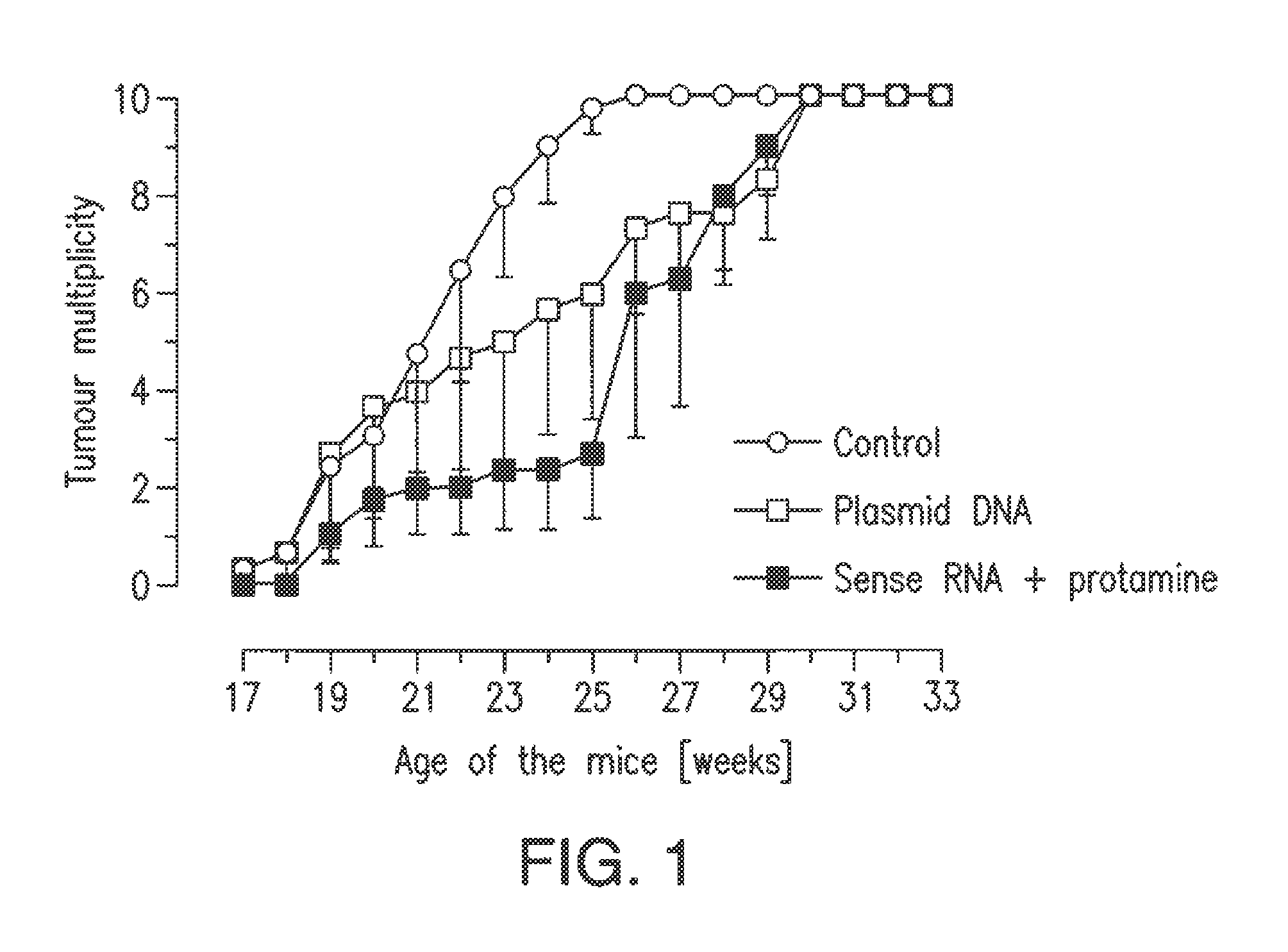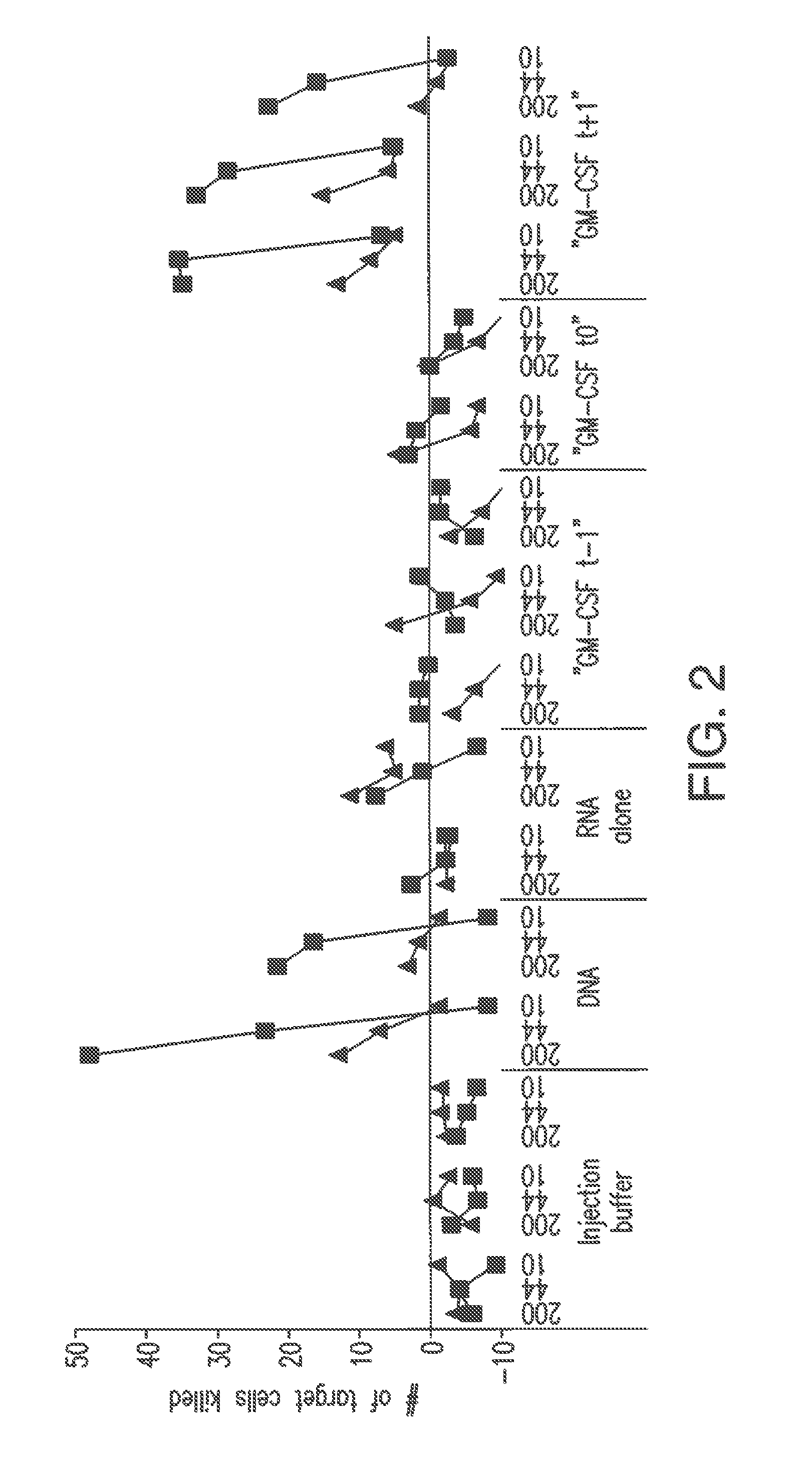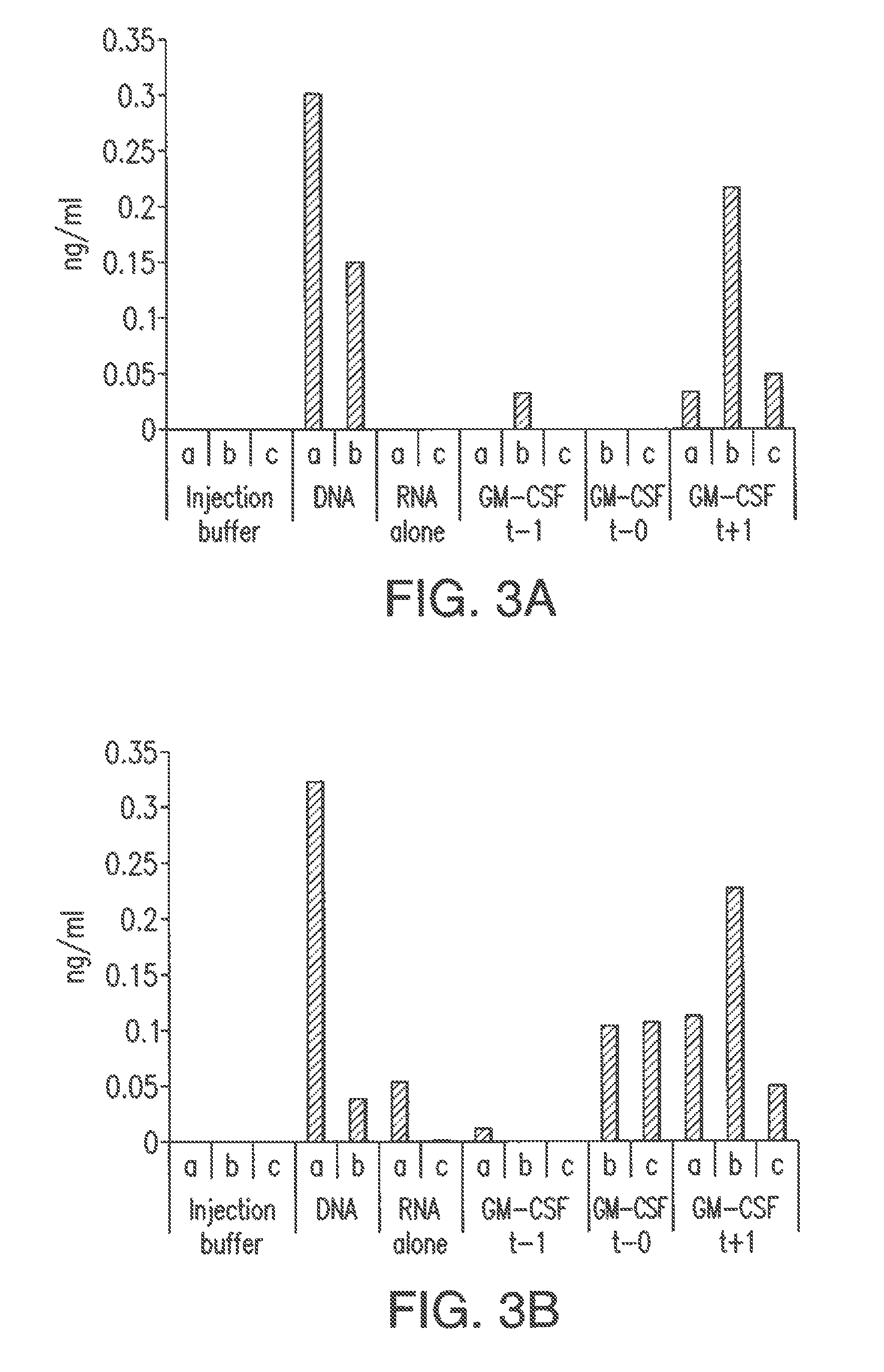Application of mRNA for use as a therapeutic against tumour diseases
a technology of tumour disease and mrna, applied in the field of pharmaceuticals, can solve the problems of uncontrollable propagation of genes having gene therapy action, inability to rule out viral genes introduced, substantial risk of gene therapy,
- Summary
- Abstract
- Description
- Claims
- Application Information
AI Technical Summary
Benefits of technology
Problems solved by technology
Method used
Image
Examples
example 1
Tumour Vaccination with RNA in an Animal Model
Materials and Methods
[0081]Capped mRNA which codes for a shortened version of the Her-2 / neu protein of the rat (“ECD-TM-neu-rat”, containing the extracellular domain and the transmembrane region, but not the cytoplasmic region) was prepared, using the “SP6 mMessagemMachine” (Ambion), with the aid of a plasmid which substantially corresponded to the structure shown in FIG. 8, but contained an SP6 promoter instead of the T7 promoter and in which the ECD-TM-neu-rat construct was inserted after the SP6 RNA polymerase promoter. The mRNA prepared was dissolved in injection buffer (150 mM NaCl, 10 mM HEPES) at a concentration of 0.8 mg / 1 and the solution was mixed with protamine sulfate (Sigma) (1 mg protamine per 1 mg RNA). 50 μl of this solution were injected into the auriculae (in each case 25 μl per ear) of mice. Eight injections were performed, in each case one at the age of 6, 8, 13, 15, 20, 22, 27 and 29 weeks. Mice to which correspondin...
example 2
Influence of GM-CSF on RNA Vaccination
Materials and Methods
Mice
[0083]BALB-c AnNCrlBR (H-2d) mice (female) 6-10 weeks old were obtained from Charles River (Sulzfeld, Germany).
Plasmids and Preparation of RNA
[0084]The ORF (LacZ) which codes for beta-galactosidase, flanked by 5′- and 3′-untranslated sequences from the beta-globin gene of X. Laevis, was into the plasmid pT7TS (P.A. Creek, Austin, Tex., USA), in order to prepare the plasmid pT7TS-kozak-5′ beta gl-lacZ-3′ beta gl-A30C30 (cf. Hoerr et al. (2000) Eur. J. Immonol. 30: 1-7). A schematical view of the general structure of the plasmid pT7TS with the flanking 5′ and 3′ untranslated sequences from the beta-globin gene of X. Laevis is shown in FIG. 8.
[0085]The plasmid prepared in this way was linearized with PstI and transcribed in vitro using the m-MessagemMachineT7 Kit (Ambion, Austin, Tex. USA). The RNA prepared in this way was purified by means of LiCl precipitation, phenol / chloroform extraction and ammonium acetate precipitati...
example 3
Effect of an RNase Inhibitor on mRNA Expression In Vivo
[0093]Naked or protamine-associated or -complexed mRNA which codes for beta-galactosidase (prepared as described in example 2) was injected into the auricula of mice in an amount of 25 mg of RNA in injection buffer (150 mM NaCl, 10 mM HEPES). Further mice were injected with the mRNA which codes for beta-galactosidase, together with 10 U of the RNase inhibitor RNasin (an enzymatic RNase inhibitor extracted from the pancrease, obtainable from Roche or Promega). The RNase inhibitor was mixed with the RNA solution directly before the injection. After 12 hours, the ears were in each case removed from the mice. Thin microscope sections of the auriculae were prepared and were stained with X-gal. Injection of naked or protamine-associated mRNA leads to a detectable beta-galactosidase activity in a few cells in the corresponding thin sections (blue cells in FIGS. 5 and 6). Some cells have thus taken up the exogenous RNA here and translat...
PUM
| Property | Measurement | Unit |
|---|---|---|
| concentration | aaaaa | aaaaa |
| time | aaaaa | aaaaa |
| time | aaaaa | aaaaa |
Abstract
Description
Claims
Application Information
 Login to View More
Login to View More - R&D
- Intellectual Property
- Life Sciences
- Materials
- Tech Scout
- Unparalleled Data Quality
- Higher Quality Content
- 60% Fewer Hallucinations
Browse by: Latest US Patents, China's latest patents, Technical Efficacy Thesaurus, Application Domain, Technology Topic, Popular Technical Reports.
© 2025 PatSnap. All rights reserved.Legal|Privacy policy|Modern Slavery Act Transparency Statement|Sitemap|About US| Contact US: help@patsnap.com



